Green leafy vegetables provide essential vitamin and mineral content. Leafy greens, including spinach and kale are an important source of potassium and calcium. Beans are excellent options for people who have diabetes. Whole grains have a high fiber content and more nutrients than refined grains. Many human beings need healthy fats for a certain number of reasons. Fatty fish is a good supplement and a good choice for any diet. Walnuts contain omega-3 fats rich in alpha-ALic acid (AL-A) So the consumption of walnuts is vital. Your diet should have insulin resistance diet.
What is a Type 2 diabetes friendly diet?
A healthy diet is a critical element of a healthy diabetes management strategy. Other pillars are regulating the stress response and exercise schedule and taking prescription medicine. The diet is definitely not as hard as one would think the doctors say. So it may be possible to make it more joyous while managing cancer.
Diabetic diet
Diabetes is a condition in which blood sugar aka blood glucose is too high in the blood. To regulate the amount of sugar in the blood, obeying dietary guidelines for diabetics patients becomes mandatory. You can use a diabetes testing kit to check the blood sugar level in your body
Diabetes is an illness that majorly affects the diet of the diabetic person, resulting in a set of changes in the diet. Diabetes is of various types and there may be a slight change in diet recommendation by diabetologists for each type of diabetes. Patients who suffer from serious diabetes should include a diet plan particularly defined for diabetes patients, so as to lead a healthy lifestyle.
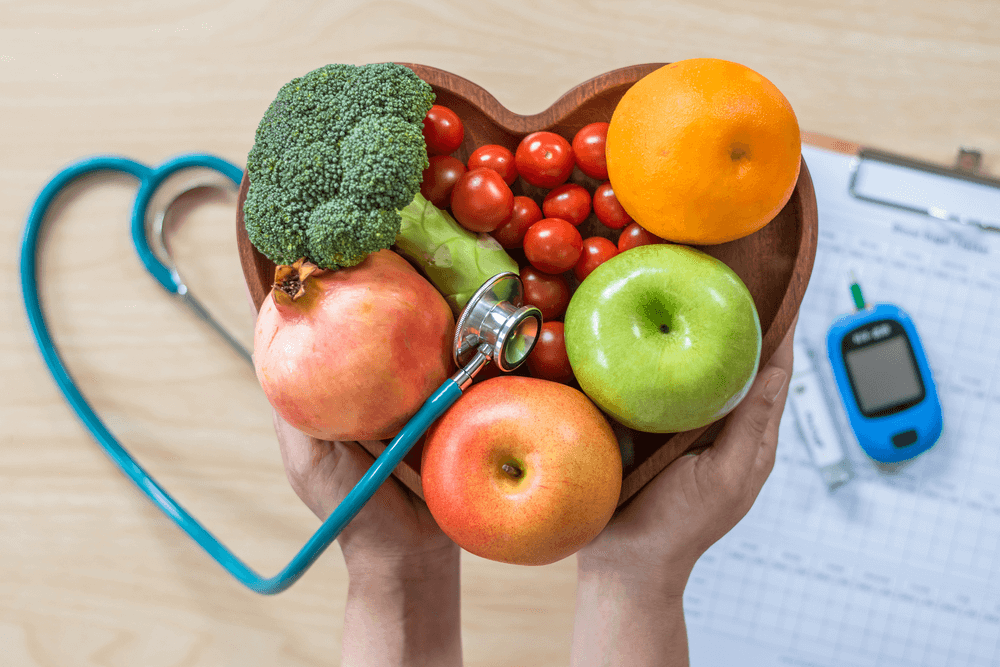
Diet guide for diabetic: What food should diabetic patients consume and which food to avoid.
Diet guide for diabetic: What food should diabetic patients consume and which food to avoid.
In this article, we will consider some points on the dietary guidelines for diabetes & mention what should diabetics eat & foods diabetics should avoid. You should take proper diet to keep your blood sugar in control.
Food Diabetes patient must consume
Certain food should be consumed in higher quantities in patients suffering from diabetes. Patients should consume high fiber food items. Here is a list of foods for diabetics, that will help them maintain their sugar level.
- Whole cereals like whole wheat flour, wheat bran, whole wheat bread, Pearl millet aka bajra, jowar & oats.
- Whole pulses like dals with skin, rajmah, chola, kala chana, chowli, etc.
- Black chickpeas aka Kala chana is good for diabetics as it has a glycemic index of 28, which is considered in the range for low-glycemic index foods.

black chickpeas or kala chana for diabetes
What is the glycemic index?
The glycemic index measures the impact of carbs containing foods on blood sugar levels i.e it marks how quickly blood glucose level rises after having food. Roasted Kala chana can serve as a good snack for diabetic patients.
Jowar has moderate glycemic index & 100 grams, jowar roti contain 334 Kcal of absolute gluten-free energy making it one of the good food for diabetics. Jowar contains few photochemical compounds which have the capacity to improve the sensitivity of insulin, prevention of cancer, etc. Insulin hormone plays an important role in blood sugar level regulation. Jowar is also said to reduce hepatic gluconeogenesis i.e. liver produced glucose.
Leafy vegetables, salad vegetable and whole fruit which should be consumed.
Soybean should be consumed as a high source of protein, iron, and calcium.
Dairy products like toned/ skimmed cow’s milk are recommended.
Variety of refined oils should be taken and one of the following types should be considered for your cooking needs which include sunflower oil, safflower oil, corn oil, and soybean oil. Another consideration should be mustard oil, groundnut oil, olive oil, and rice bran oil.
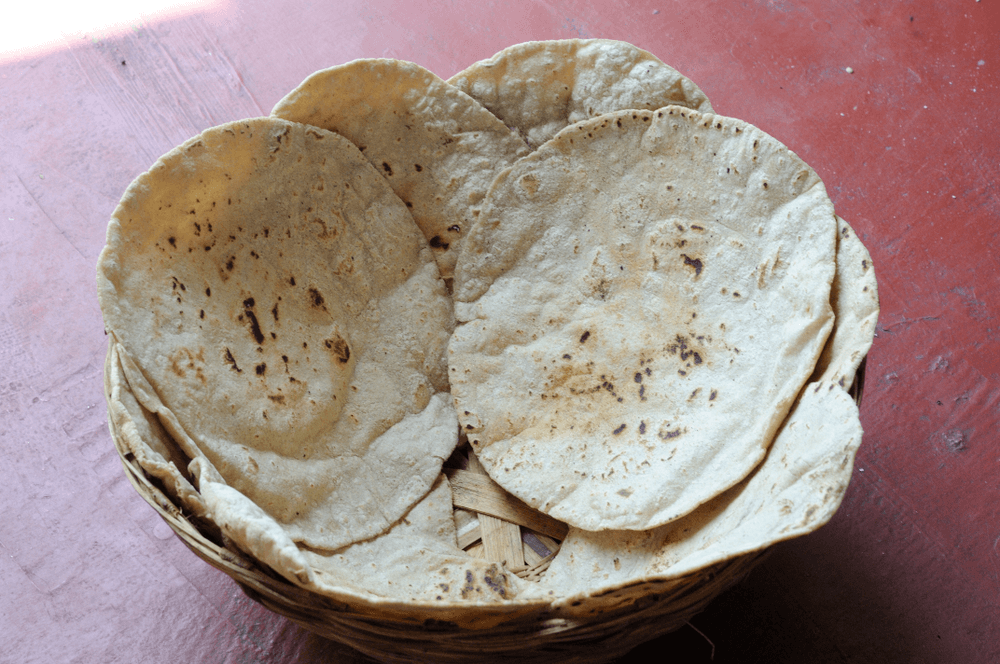
Jowar aka sorghum is super-food for a diabetic patient
Foods that diabetics should avoid:
Certain foods should be avoided or limited in patients suffering from diabetes including:
- Fats like vanaspati, ghee, butter, coconut oil, and coconut chutney.
- Fried foods which include chips, papad, samosa, pakoras, pure and paranthas should be avoided.
- Foods that are high in sugar including bakery products like cakes, pastries, cream biscuits should be avoided.
- Sweets like laddu, burfi and ice cream should be withdrawn.
- Also, things that should be avoided include refined food products like maida, sabudana aka tapioca, cornflour, custard powder, arrowroot powder. Sabudana comes under the starchy foods list, like potatoes & rice which are said to be bad for diabetics. Tapioca contains high calories & even has a high glycemic index making it harmful for diabetics.
- Groundnut, coconut, and dried fruits should be avoided including almonds and walnuts which should be consumed in moderation.
- Smoking and alcohol should be avoided among patients suffering from diabetes as it affects health adversely.
- All aerated drinks, squashes and fruit juices should be avoided.
- Fatty meats like ham, bacon, the yolk of egg, red meat, organ meat, shrimps, lobster, and prawns should be avoided.
- Pickles that are made in oils should be avoided.
- Canned, tinned, processed and processed food such as tinned fruits, sauces, and processed cheese should be avoided.
- Avoid fruits like mango, dates, bananas, grapes, chickoo & seetaphal should be avoided.
- Vegetables like potato, yam, arbi, sweet potato, and tapioca should be avoided.
Diet For Diabetics
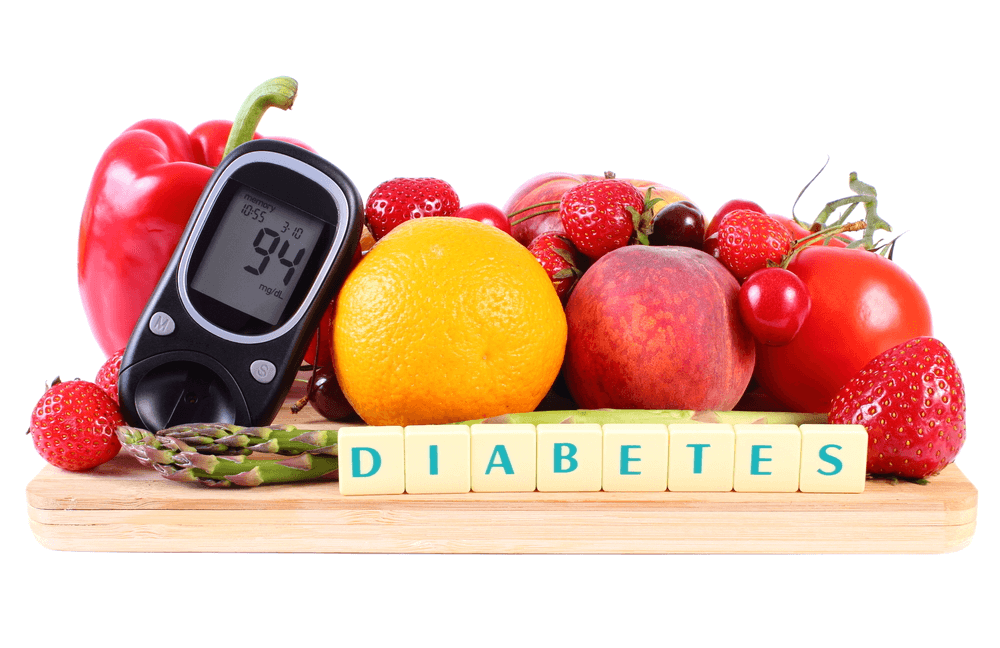
Best food for diabetic patient
- Fruits: You need to consume 2 fruits daily for maintaining your blood sugar levels.
Diabetic diet chart or plan below shows a variety of fruits that are good for diabetics and what quantity they should be consumed
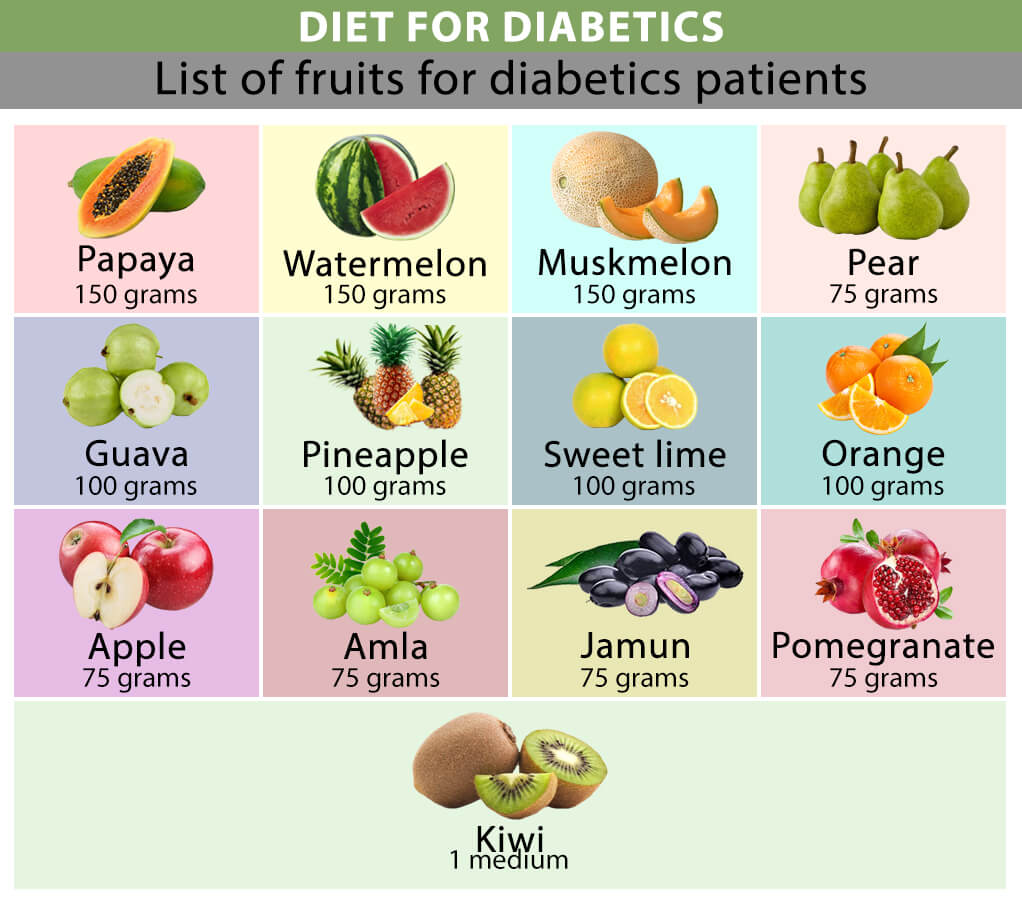
Fruits to be consumed by diabetics.
Papaya (150 grams), Watermelon ( 150 grams ), Muskmelon ( 150 grams ), Pear ( 75 grams ), Guava ( 100 grams), Pineapple (100 grams), Sweet lime (100 grams), Orange (100 grams), Apple (75 grams), Amla (75 grams) Jamun (75 grams), Pomegranate (75 grams), Kiwi (1 medium)
- Other things which you need to consume include green tea with lemon which can be included once or twice daily preferably early morning with 5 almonds or 2 walnuts.
- For small meals, you can include roasted chana and kurmura, bhel with sprouts, veg sandwich, buttermilk. Boiled chana, chola, rajmah or chowli with salad vegetables
- Include vegetables in plenty including salads approximately 500 grams daily, carrot and beetroot in moderations.
Tips for when Temptation Strikes

When talking about the diabetes diet, temptation means eating what you should not be eating. These foods contain sugar and carbs that can send a blood sugar swing skyrocke. A cake, cinnamon bun, a latte or even a chip contains more than just carbohydrate : in fact many foods often also produce unhealthy oils. The less times you have consumed sweet sugary, fatty desserts and snacking, the less you get that desire. Some people will be able to control their own cravings. Striking the proper balance will depend on my objectives and the urgency. By eliminating the calories from the caloric artery clogger, you have chosen longevity to be the key to your health.
Tips to Remember for Diabetes
The following tips should be remembered for patients suffering from diabetes including the following:
- Patients should avoid fasting and feasting as this affects the blood sugar level in the body adversely.
- Fish and chicken should not be consumed more than 2-3 times a week in quantities more than 50 grams including boiled, steamed, grilled, or baked form.
- The inclusion of wheat flour with black chana flour, bajra, jowar, soy flour, and barley flour in the ratio of 4:1 is
- advisable. Do not seive the flour used for chapatti to incorporate fiber in the diet.
- Whole wheat bread is preferable to refined flour.
- Methi powder should be incorporated into the diet in quantities of 1 teaspoon.
- Take a liberal amount of water in quantities of a liter or more a day.
- Maintain regularity in the schedule of sleeping and eating.
Whether you’ve been diagnosed with prediabetes or a full-blown diabetes
Dieting to get through diabetes will involve making better nutritional choices than denying it or depriving you. A diabetes diet does not mean sacrificing the joy of eating or avoiding your favorite foods. You still enjoy “pizza night,” celebrating birthdays and anniversaries, and enjoying seasonal meals and vacation cooking. It’s more about making your usual everyday diet and food decisions. That is a better way to look at a diet when you have diabetes is one that helps you establish a new normal when it comes to your eating habits and food choices. 1-2 diabetes is an excellent time to improve your eating habits.
Dining out when managing Type 2 diabetes
Eat a light snack before you go such as nuts or a low-fad plain yogurt. Visualise your plate with some tweaks: 1/2 non-starchy vegetables (steamed if possible). Avoid meals packed with saturated fat. Alcohol numbs your appetite. Do not drink alcohol before a meal because that could mean waking up earlier in the morning. Try limiting it to one glass of alcohol at one time.
Low-carb diet for Type 2 diabetes
Low-carb diabetes diets are used to lower insulin resistance and help reduce the need for certain foods when it comes to blood glucose control. Another report concludes that the authors recommend it as a firstline cure with diabetes.
Indian Diabetes Diet Plan
A lot of people have this idea that all of India’s food is sugar and carbs. In reality, many of these foods contain high amounts or even pure carbohydrates, which can be unhealthy if they eat them every day! However, there are tons of superfoods found in Indian cuisine, such as spices like cumin seeds (jeera), ginger root., black pepper berries, etc… These ingredients will help you maintain a healthy lifestyle because not only does it taste good but also has amazing health benefits too so enjoy your meal guilt free with an awesome diet plan from our side!!
So which are the Indian Food items suitable to people with diabetes?
FATS
Healthy fats are an excellent choice for diabetics because they help control insulin levels in the body. Fats like polyunsaturated fatty acids (PUFA) regulate glucose metabolism by boosting production of good cholesterol without adding excess weight or inflammation to your system
Healthy sources include fish, liver oils from oily fishes such as salmon or soybeans which have been processed through deep frying but without being cooked at high temperatures soya butter instead – these foods provide omega 6s healthier than most vegetable oils do! Walnuts can also be considered if you’re looking after yourself nutritionally; seeds used raw should always be avoided though due it their small size rendering them highly susceptible when exposed close proximity.
In fact Ghee, a traditional Indian food that has been used for centuries to treat diabetes and has been a part of the diabetes diet. The unsaturated fats found in this dairy product help balance blood sugar and can be taken as medicine if needed, without harming anyone!
PROTIENS
Protein is the building block of our body and there’s no exception for diabetic patients. It can also be a part of your diabetes diet. While protein itself does not influence blood sugar or blood glucose level much, but it can help with satiety to keep you feeling full longer! For example: 0-1kg per day should be enough protein intake if your diet consists mostly carbs or fat while maintaining healthy weight goals.
People with diabetes must have a well balanced meal plan consisting mainly on proteins will make sure that hunger pangs are kept at bay because these high source foods tend also have other nutrients which may assist in managing diabetes symptoms better than just 1 Serving
Proteins are important for our bodies, and can be found in many different types of foods.
Protein rich Indian food good for diabetics are Kidney beans, soybeans, lentils, dal, sprouts, milk, curd, paneer, egg. fish, chicken and peanut.
Among dals you can have moong, masoor, tur, chole, matar, chana, rajma, horse gram, or their sprouts. Dals also play an important role in people with diabetes and are important element of blood sugar control.
CARBOHYDRATES
If you are looking for a light, yet filling carbohydrate-rich food to help manage your diabetes symptoms then look no further. These types of carbohydrates may be good in the beginning stages when blood sugar levels have not stabilized or improved because they don’t flood our system with sugars like white breads and pastas do but instead provide slow release energy so there is less risk we’ll crash afterwards from this high dose intake which can quickly lead back into feeling hungry again before another meal has been eaten at all!
Among Indian food items food items good for diabetics are suji, dalia, oats, poha, ragi, brown rice, jowar, bajra, makhana, murmura
VITAMINS AND MINERALS
The body needs a healthy diet to maintain the health and function of organs. Diabetes patients must eat plenty of green leafy vegetables, gourds (such as yam), other veggies like potatoes or sweet potato; moderate amount root crops such as carrots/turnips along with seasonal fruits for optimal vitamin intake that will help them stay energized throughout their day!
Some More Questions Answered
What fruits can diabetics eat?
All types of diabetes-friendly fruit is fair game for those with a condition that needs to be managed, but it’s important not to go overboard.
You should stick close as possible in terms of how many servings per day by eating two different kinds – one sour or citrus type (lemon/ mosambi/, amla g etc) and any other kind such as watermelon, papaya, pomegranate, banana, chikoo, mango
Eat sweet fruits in moderation.
Do not have fruit juices, instead eat whole fruit. This will keep your blood sugar in check. Fiber from the inside of this health snack keeps you fuller longer, so it’s easier for people who are watching their diet or have diabetes to digest.
Eat fruits as a separate mean. Do not end or start your meal with fruits.

What is a 16:8 diet? Is it good for maintaining blood glucose levels?
This form of dieting is recommended for those who wish to avoid getting diabetes, rather than for people with diabetes. The 16:8 diet is a type of intermittent fasting where you break each day into two parts – an 8 hour period and then another 16 hours. For the first part of your eating window, all foods are off limits except for water or unsweetened drinks like coffee during that time span; however once it’s over with (16 hrs) ,you can eat any meal as long as its not too late in order to avoid sleep deprivation!
This diet that provides the benefits of long term weight loss with less discipline and flexibility than other plans.
It can be as simple or complicated for you, depending on your personal preference; whether it’s one meal per day at 8pm followed by another in the morning OR six small meals throughout each 24 hour period (including 2 snacks).
Does a vegetarian diet offer any benefits for diabetics?
People who follow vegetarian diets have a lower risk of developing type 2 diabetes, even when controlling for meat consumption. The reasons why this is true isn’t clear yet but there may be an interaction between protein and fat intake in the diet or other lifestyle factors such as exercise that cause these different outcomes among vegetarians.
A vegetarian diet can protect people with diabetes, even if you’re eating meat. The association between the two isn’t always what it seems; while some studies show that there’s more chance of getting type 2 when consuming animal products rather than none at all (for example: pesco-vegetarians), others find just enough restriction in omnivores or herbivores improves their blood sugar levels and reduces insulin requirements over time without causing weight gain like many people think would happen with higher quantities consumed on a regular basis . In fact one recent study found those following strict vegan lifestyles have lower fasting insulin concentrations meaning less risk for developing hyperinsulinemic disease which has been linked directly to elevated blood sugar levels. Thus a vegetarian diet can be a good way for people with diabetes to have blood sugar control.
What is a Keto diet? Is it good for managing blood sugar levels?
The ketogenic diet is a high-fat, low carbohydrate eating plan that many people with type 2 diabetes find effective in managing their disease. In fact, the Keto Diet was created back in the 1920s as an epilepsy treatment but it’s being studied now for its effects on glucose metabolism and blood sugar levels among other things!
A high-fat diet, like the keto diet can seem unhelpful at first. The goal of this type of eating plan is to have your body use fat for energy instead of carbohydrates or glucose; on it you get most (if not all) your calories from fats with very little coming in terms animals products and carbs – but there’s no need to add extra saturated fats! Healthy foods such as eggs fish(like Salmon), cottage cheese avocados olive oil olives/olive oils nuts will sustain overall good health so don’t forget them when making changes toward better living through nutrition.
Ketogenic diets are often used to manage diabetes because they can decrease blood sugar levels. Carbohydrates turn into sugar in your body and give an instant boost of energy followed by a crash, so keeping carbohydrate intake low is important for people with type 2 diabetes who want their healthiest life
But before starting such a diet be sure to consult your doctor first.
What kind of foods can diabetics with digestive and kidney diseases or those undergoing dialyses eat?
The best diet for people with diabetes or blood sugar patients is really not that different from the kinds of foods you might eat any other time. You should be eating plenty of fruits, vegetables and protein plus less salt or sweets while including healthy fats in your meals if possible!
For a kidney disease patient there are added diet restrictions. A diet low in salt and sodium is good for diabetes, but it can also help prevent kidney problems. If you have kidney disease then in time your kidneys lose their ability to control the amount of fluid inside you as well as maintain a healthy blood pressure level – which means that less salty foods will be better. Try eating fresh produce instead and home meals instead of eating out where you may have no control over the amount of salt added to the food.
Food items that are good for both diabetics and kidney patients include
Fruits: berries, grapes, cherries, apples, plums
Veggies: cauliflower, onions, eggplant, turnips
Proteins: lean meats (poultry, fish), eggs, unsalted seafood, Dals, Soya
Carbs: rotis, brown rice, jowar, bajra
Drinks: water, unsweetened tea or herbal tea without salt or sugar
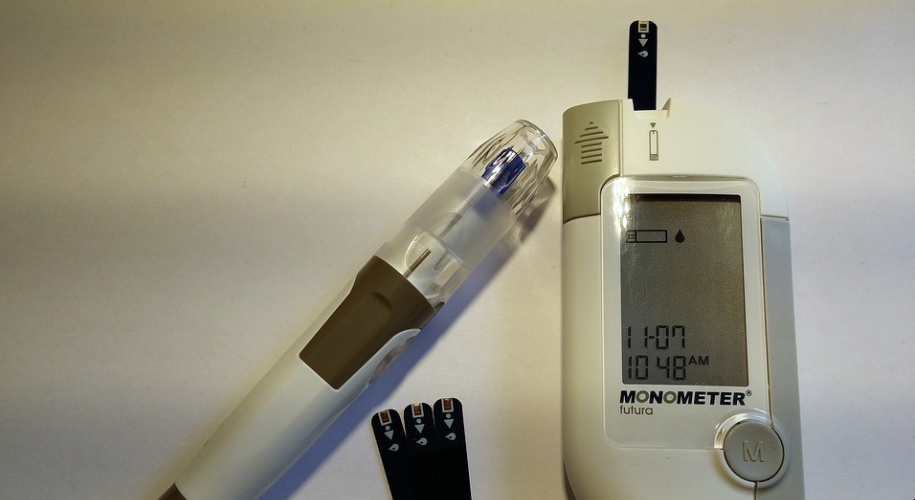
What kind of diet should heart disease patients with diabetes have?
A cardiac and diabetic diet plan should have a done a proper meal planning. Their diet should include: Right amount of carbohydrate in each meal.
Heart disease patients should have fiber by consuming a variety food items such as fruits, veggies, cereal grains etc., but bananas may be avoided due to its high sugar content; custard apples also have similar problems with their sugar levels so they’re out too!
Having too much sugar can also increase heart disease risk factors and also lead to diabetes complications.
You might want to try eating yams or purple sweet potatoes instead though because those don’t contain any natural sugars at all (and are much healthier).
Whole grains like oats, jowar, nachni, whole wheat flour, quinoa, barley should be a must daily. Such foods are of a great help in controlling blood sugar levels.
Restricted quantity of salt.
Have Omega3. This is found in fish oil, walnuts and sunflower seeds. These are quite good for heart disease.
And finally no more than 3 teaspoons of oil per day.
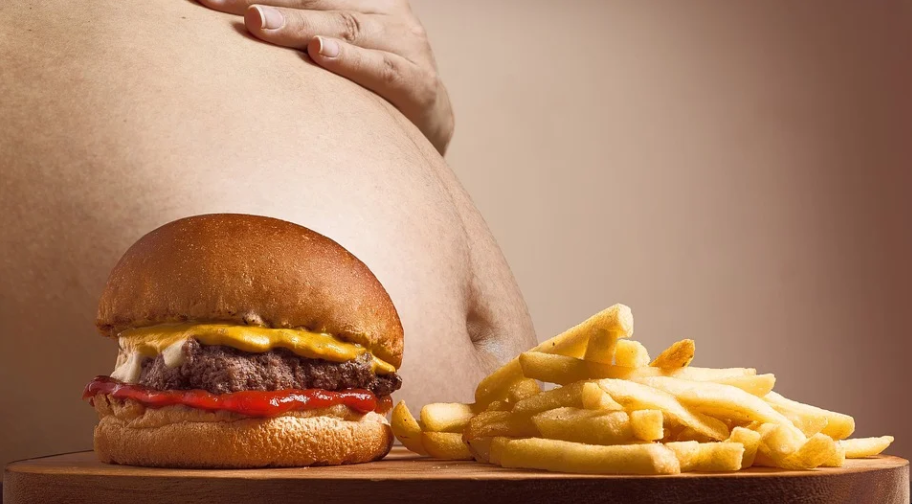
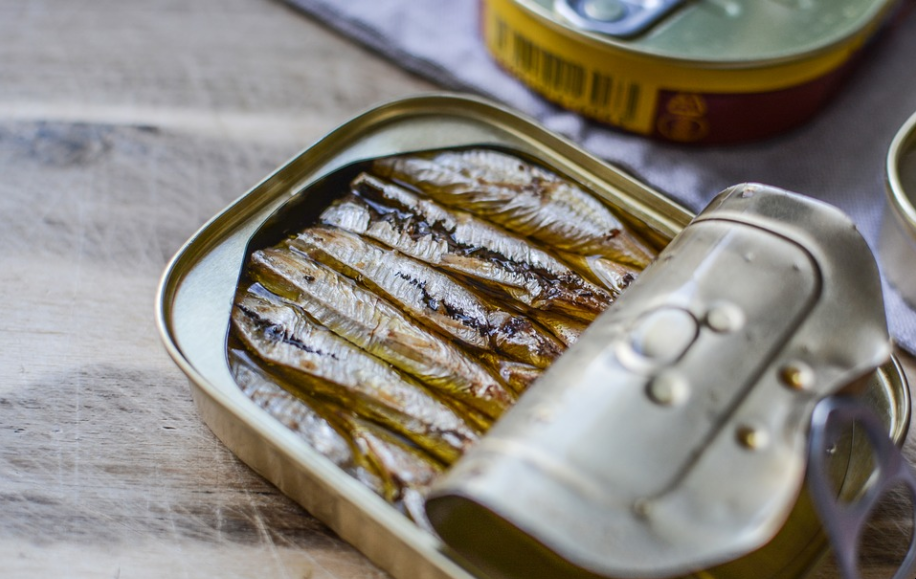
Can I eat sugar if I have type 2 diabetes?
Nuts should have at least 5 grams of added sugar in every meal as a way to limit calorie ration. This is not something to be confused with for everyone. Basically just go and enjoy some of those treats when you want.
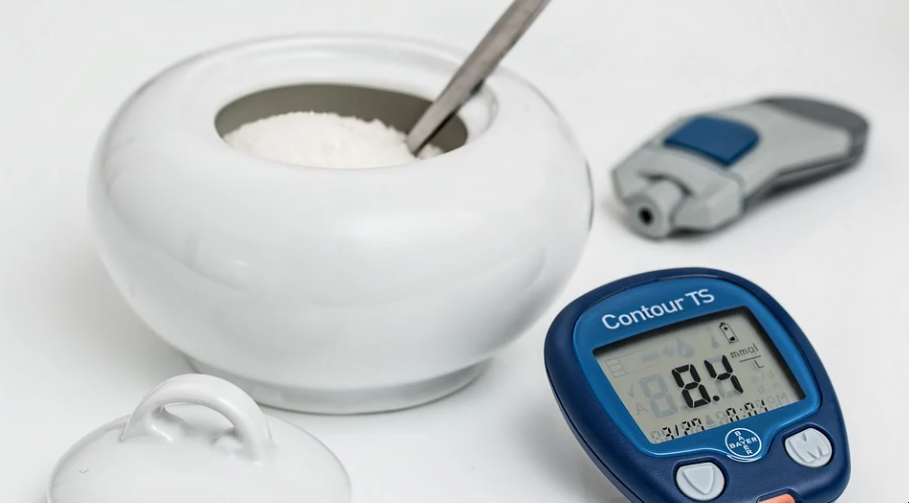
How a healthy diet can help you manage type 2 diabetes?
Having proper meal planning is the key to managing diabetes. Nourishing food consumed in appropriate amounts provide two key benefits: reduced blood sugar and reduced symptoms. Keeping blood sugar low can help reduce symptoms and lower risk of health issues. Diet should be a priority for people with diabetes as it can play a huge role to control blood glucose.
What should people with diabetes drink?
The drink you choose influences your blood sugar to a great extent. Palinski-Wade recommends focus on unsweetened beverages like water and seltzer. What coffee? Watch how your blood sugar levels have adapted since eating a lot of drinks. For example add 100 percent fruit juice to your water or give water 100 percent juice.

Can there be some side effects of having too little sugar?
While a lot of people know about the ill effects of having blood sugar soaring for people with diabetes, a thing that people do not know is that having the blood sugar levels fall drastically is also dangerous. This is specially try for people with diabetes who are taking medication for controlling their blood glucose levels. Sometimes the lack of blood glucose can also lead to people having difficulty concentrating, feeling tired or in some cases also falling unconscious. So if you are a person with diabetes then it is always advisable to carry sweets, or glucose tablets that you can have if you start having the symptoms of low blood sugar. At such times it is important to raise blood sugar levels fast.
Please take if you precautions if you have symptoms like weakness, lightheadedness, dizziness, headaches can occur from a lack of glucose. You may also feel signs of stress, such as nervousness, anxiety, and irritability. In such cases you will have to raise blood sugar fast.
Some other rules for diabetics or blood sugar patients
1) Another part of a diabetes diet is that it’s important to eat meals and snacks at about the same time each day. This helps in maintaining blood sugar levels throughout the day.
2) People with diabetes have to ensure that they take medicines at exactly the right times according to how you are planning on eating. This is an essential element of ensuring that your blood glucose levels remain stable.
3) Following a diabetes diet also means ensuring that you are eating 3 major meals, 5 minor ones makes it easier for your body function properly by providing nutrients while also helping with food digestion.
4) Alcohol contains calories but no nutrients so don’t drink alcohol every single day, as this too can lead to a spike in blood sugar levels.
5) Besides a diabetes diet, regular exercise is important for maintaining good health.
6) Add in some spice! Garlic and cinnamon can help keep your blood sugar level under control because they contain antioxidants that fight inflammation throughout the body as well as regulate glucose levels naturally without medication or needles injections from a doctor’s clinic visit.



